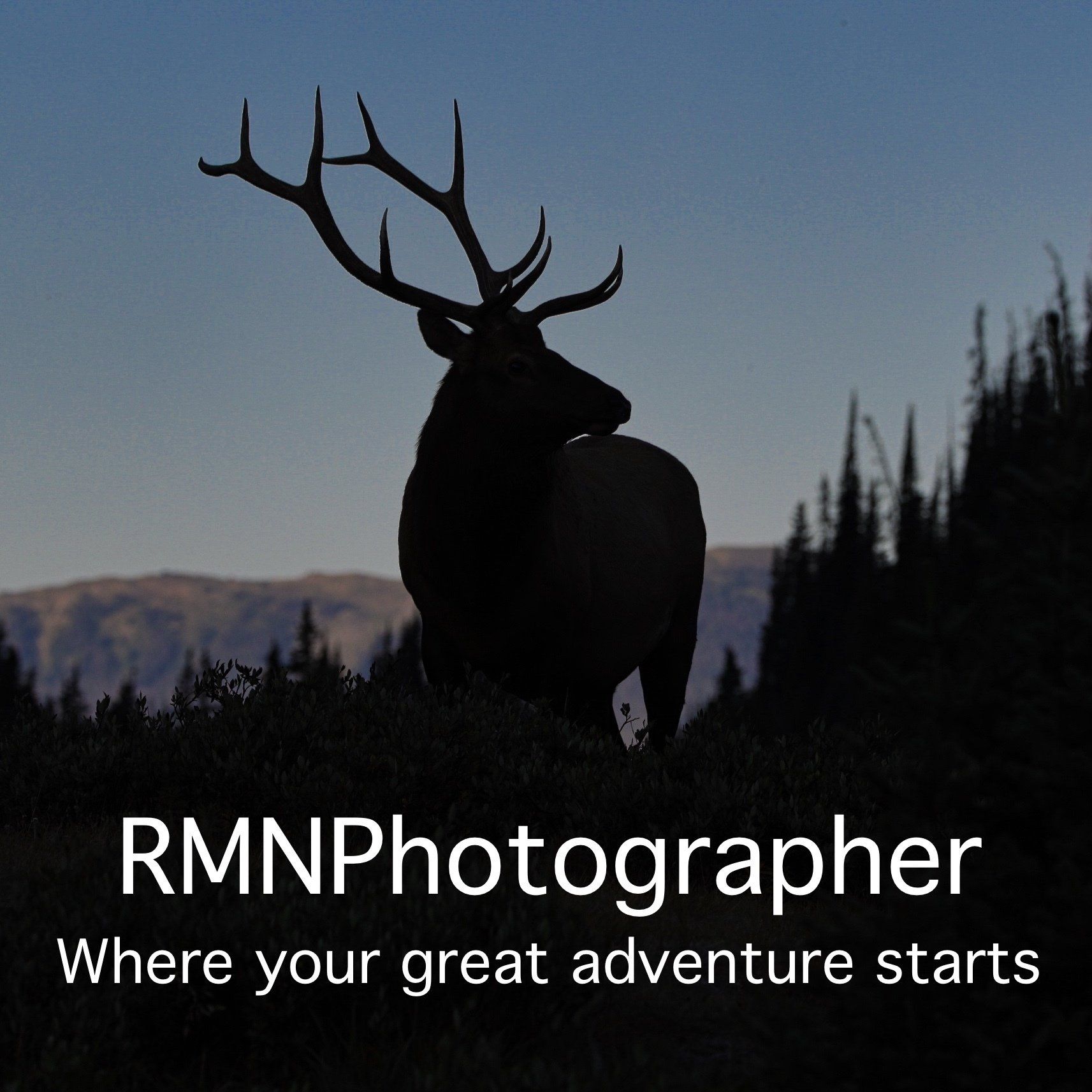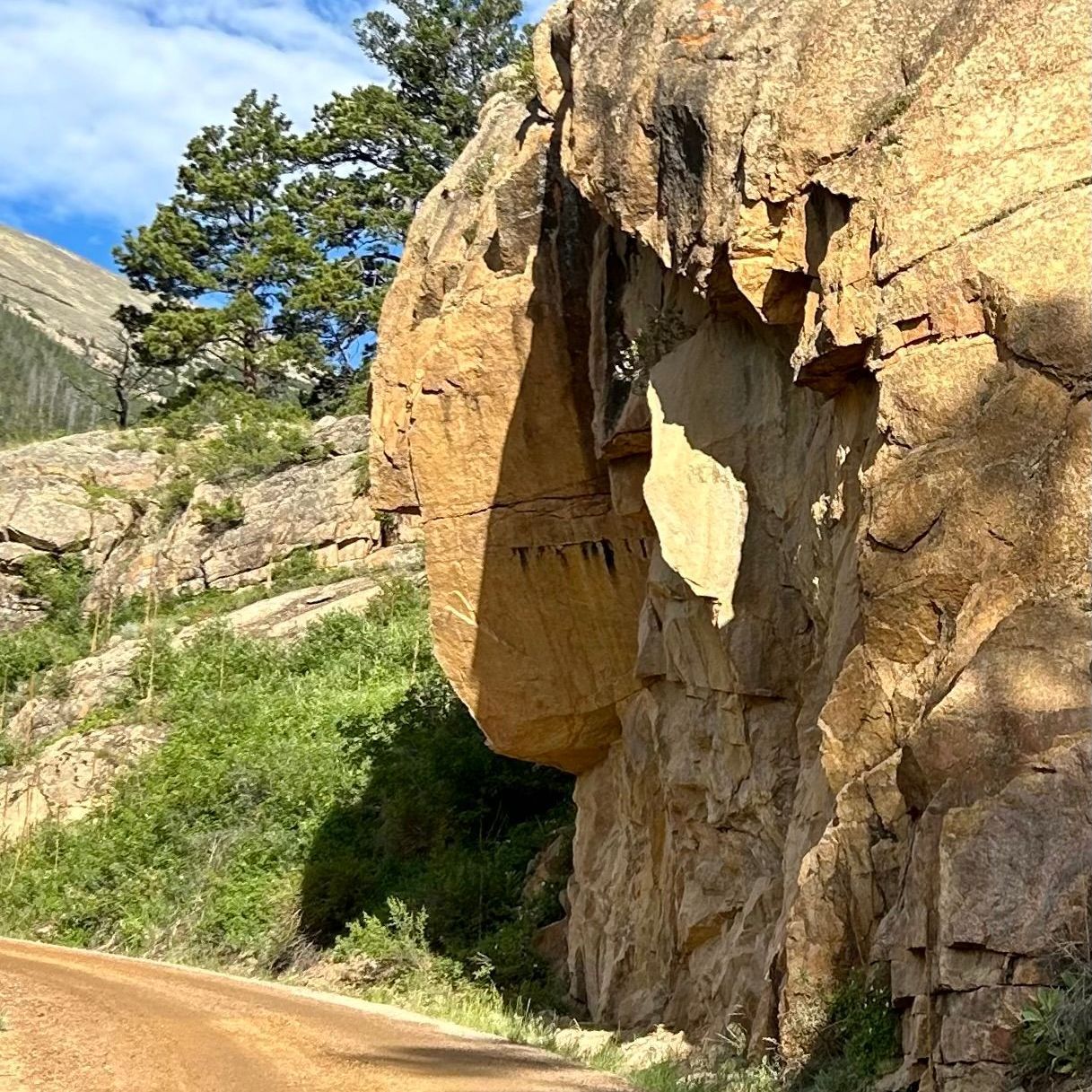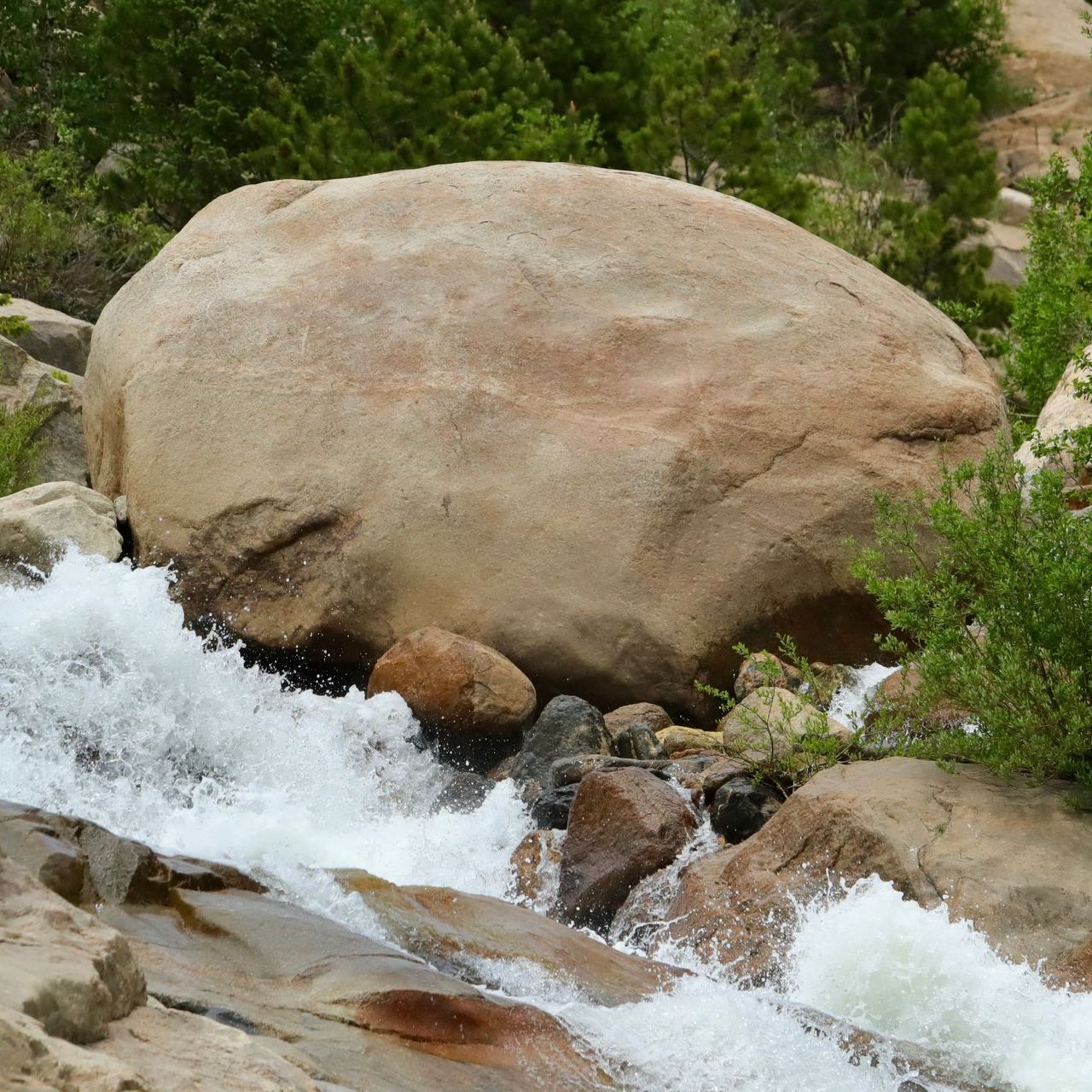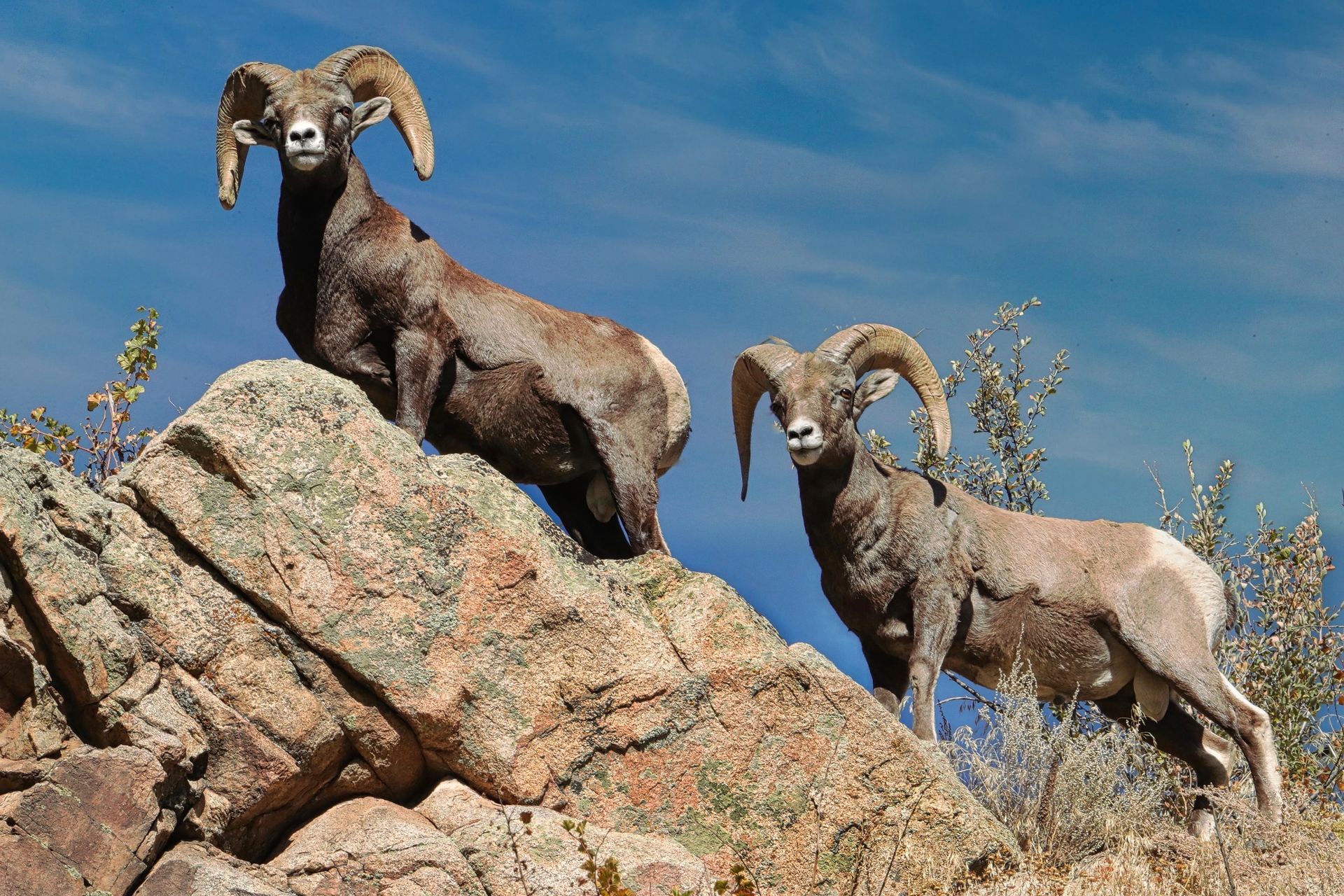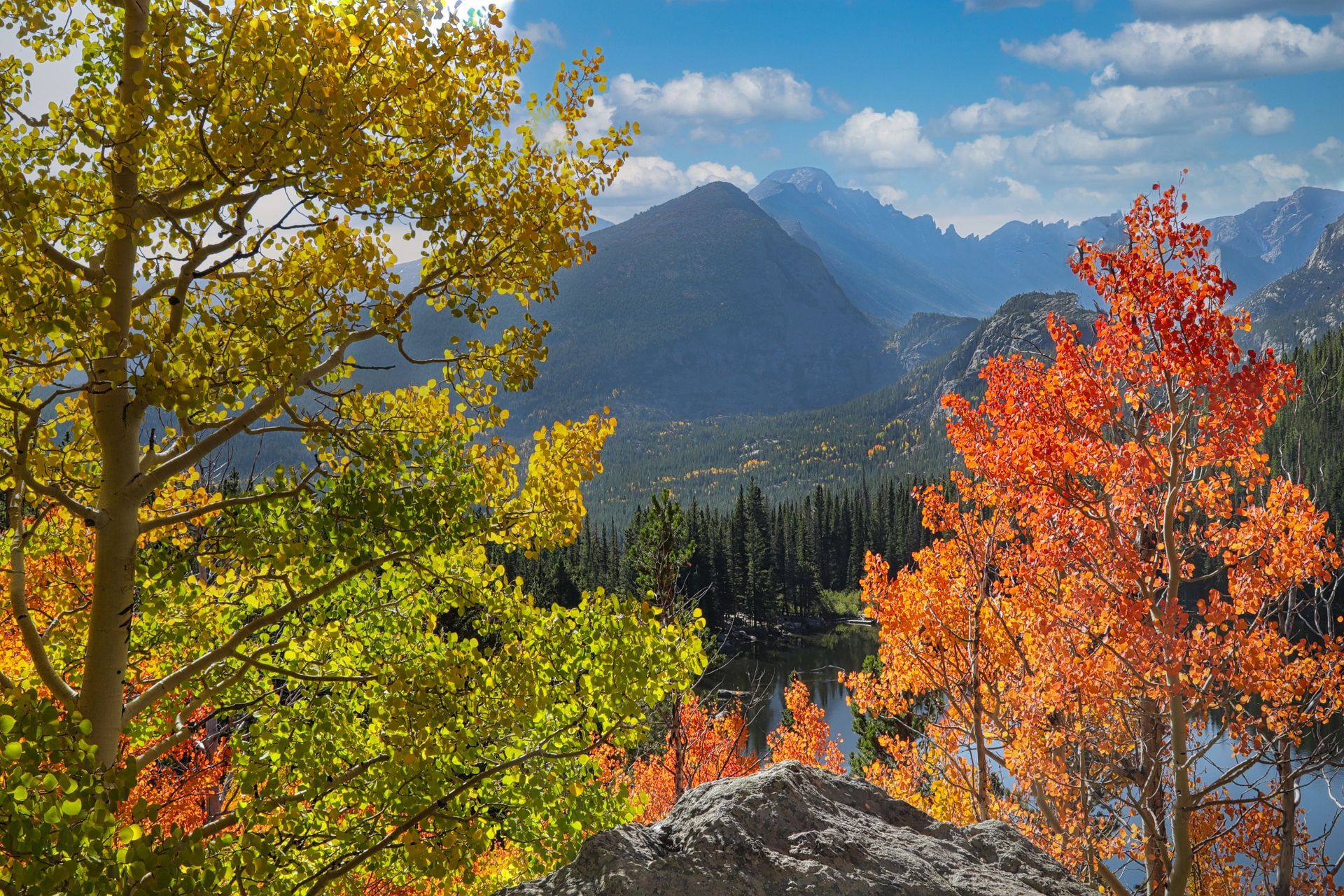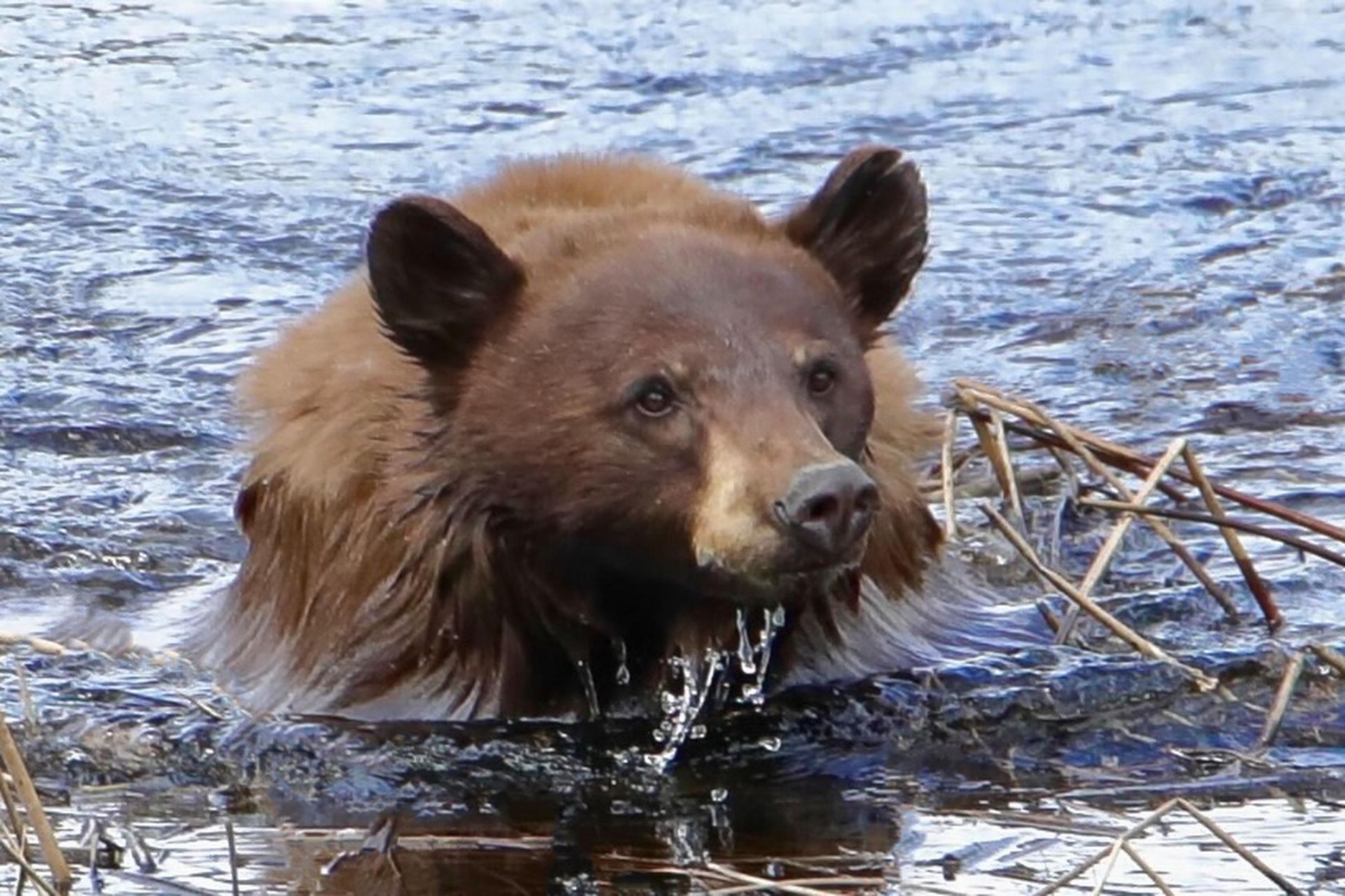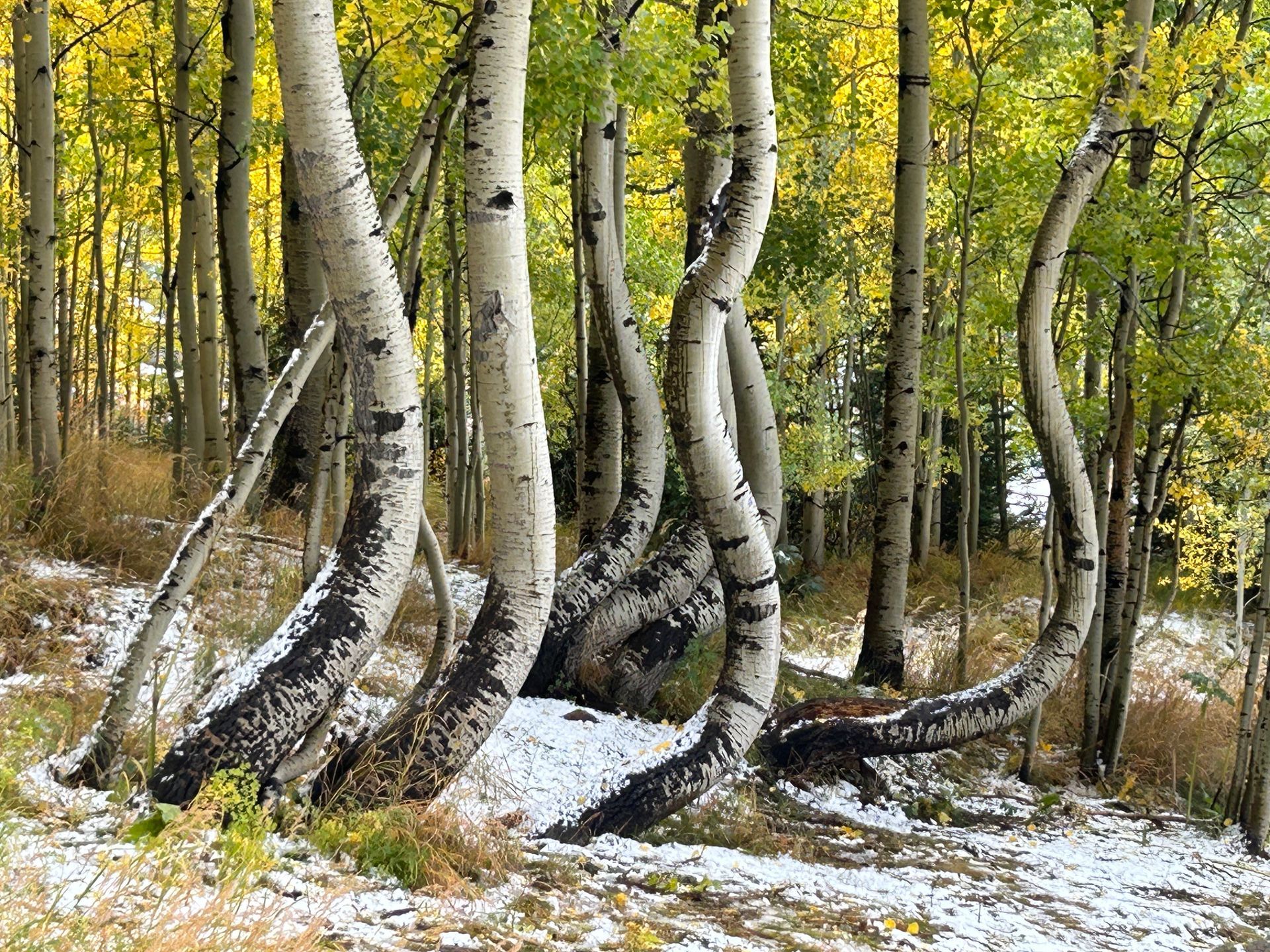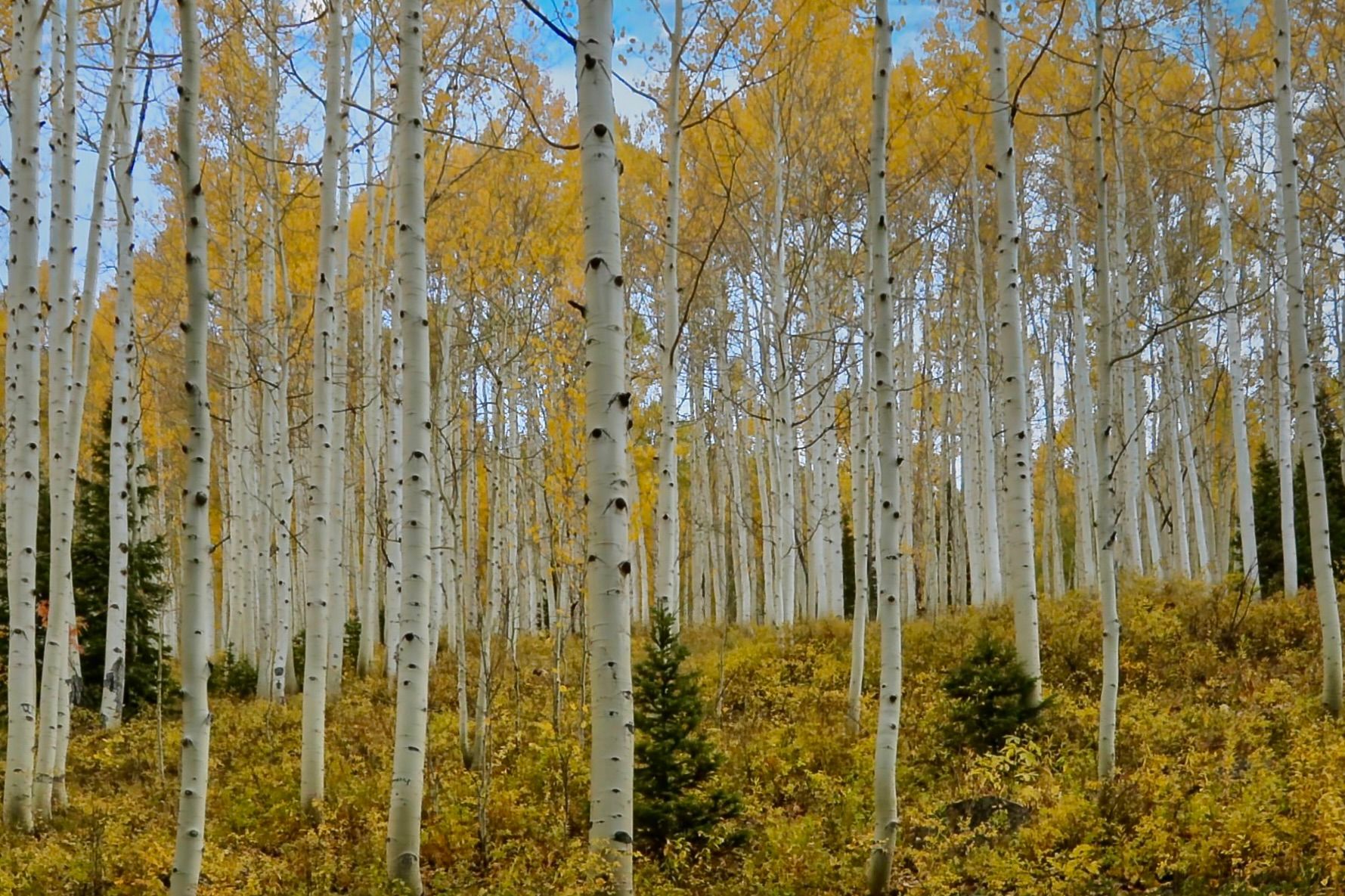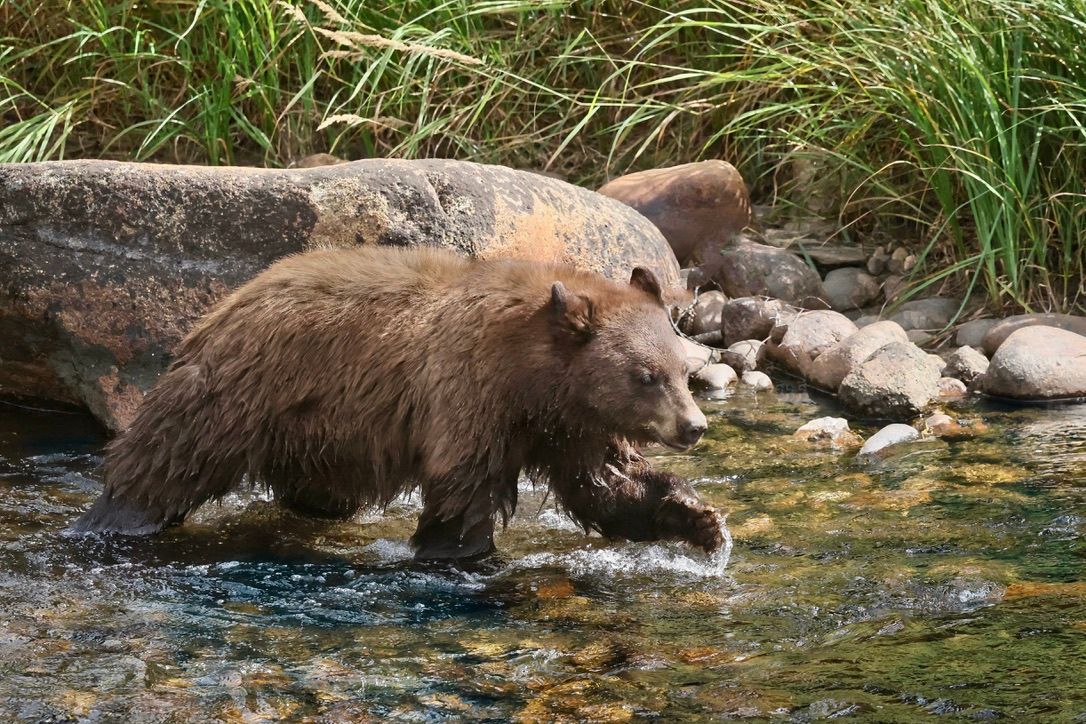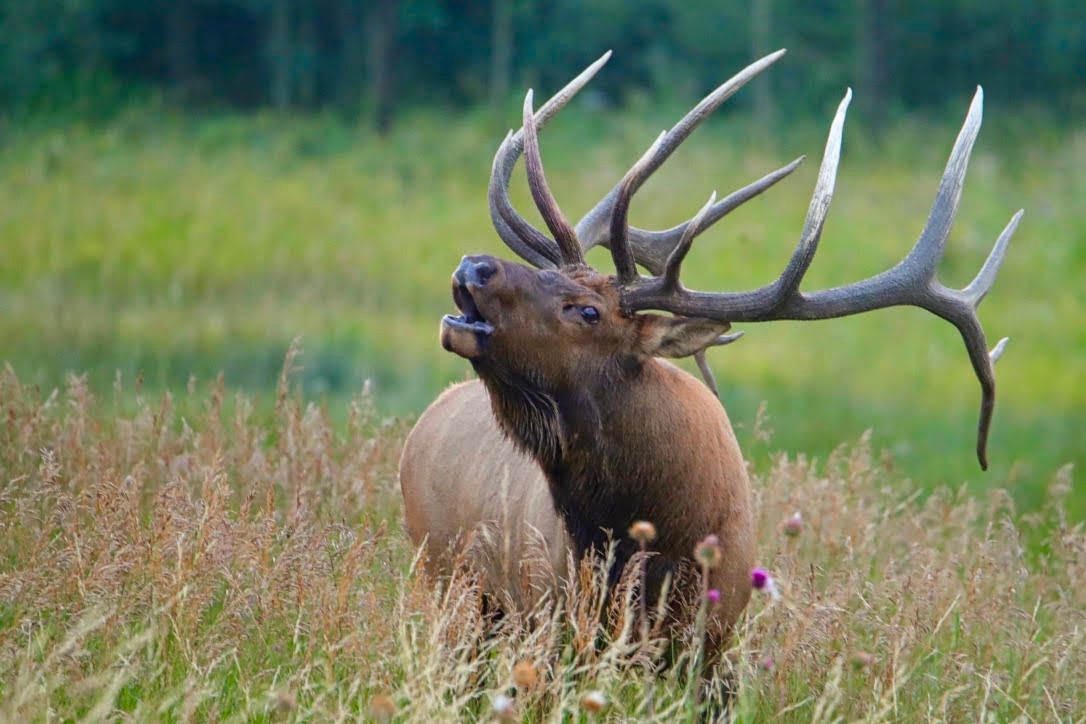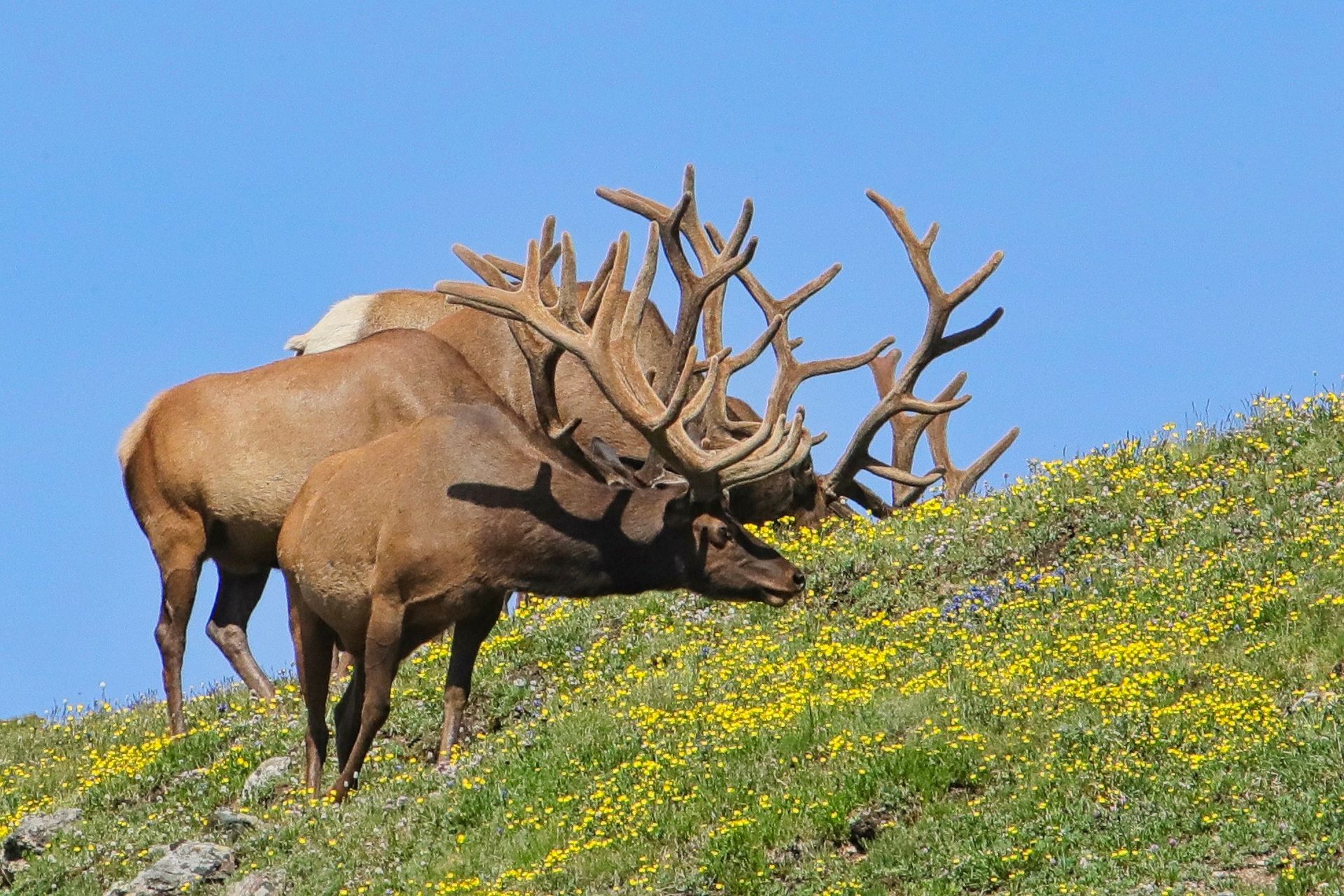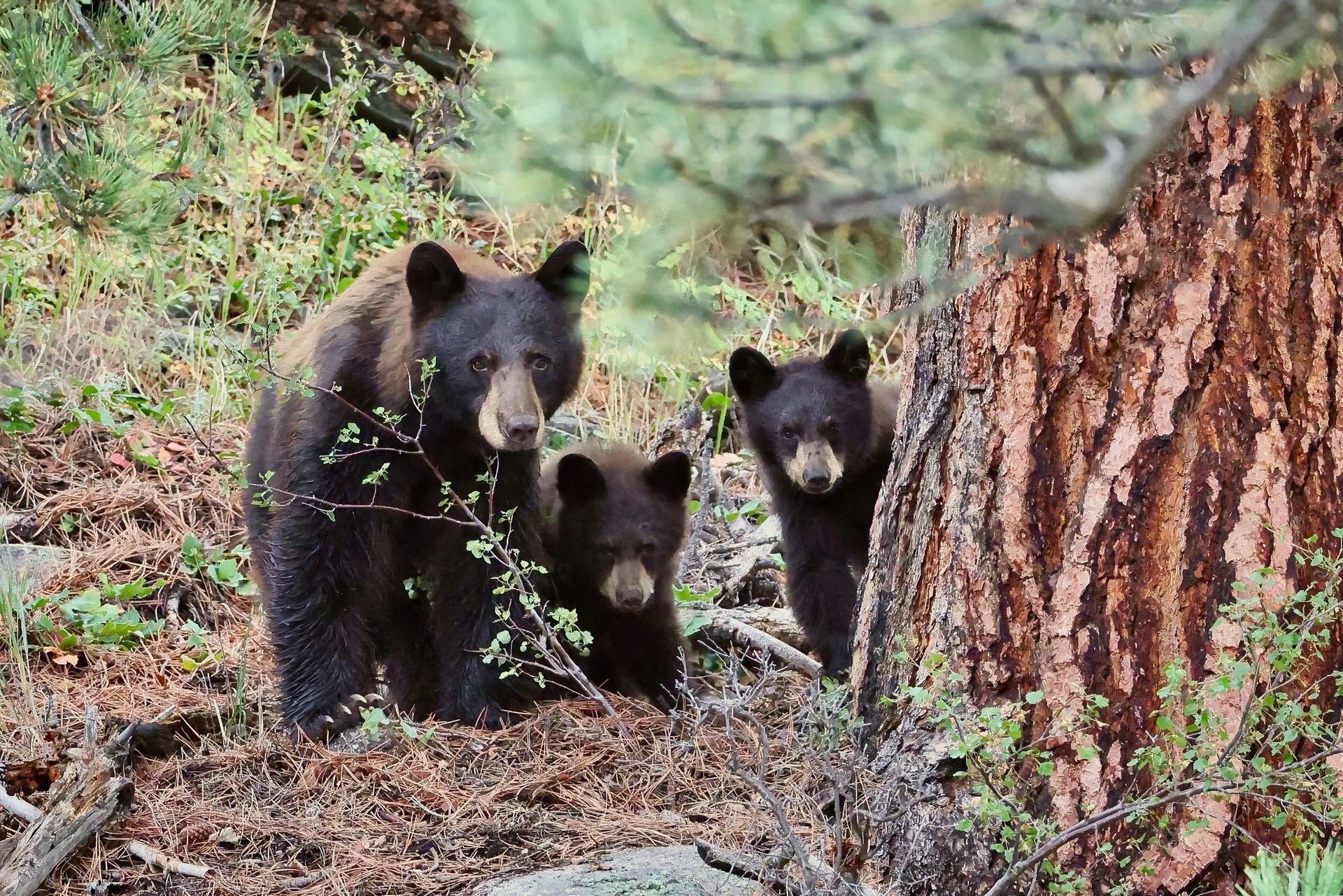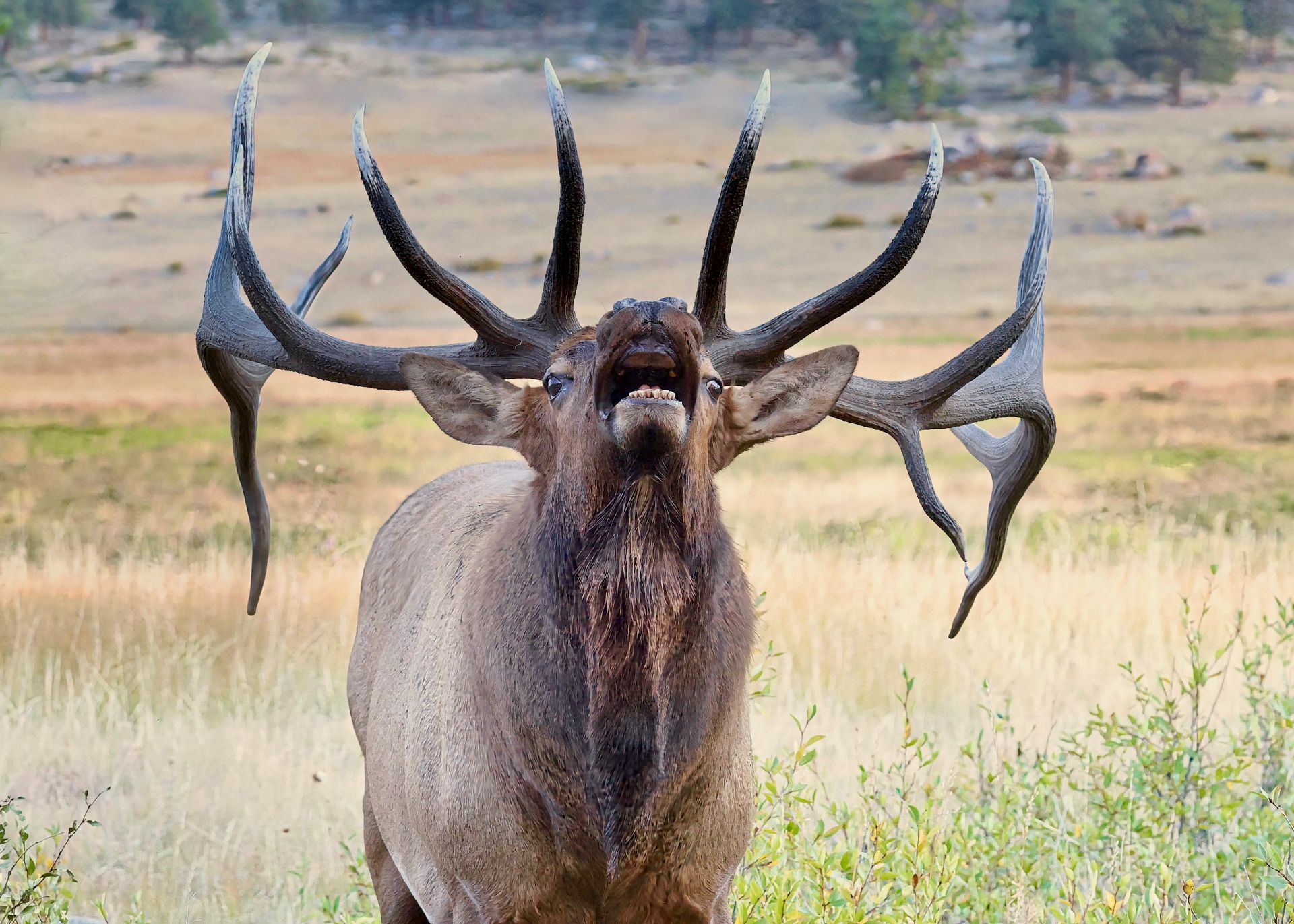My Favorite RMNP Rock
Anticipating a Beautiful Rocky Mountain Day

At sunrise, anticipating a beautiful rocky mountain day, I found myself at Sprague Lake. It is my favorite place in the park to capture the sunrise. There the light peeks over the eastern mountains and reflects in the lake to start a wonderful day.
After capturing the full sun, I turned on the boardwalk and looked at the pond behind me. Beyond it, Hallet’s Peak stood dominate. In the pond, the water was still except for a goose swimming by creating a perfect mirrored reflection.
The goose swam past the red boulder standing like an island in the middle of the pond. A tingle rushed over my body. That happens when the beauty of RMNP overwhelms me. In this case, a goose swimming by a red rock in a pond sent goose bumps rising.
From there, I toured the lower valley capturing images. Pink clouds reflected over Longs Peak, elk grazed in Horseshoe Park, and deer gathered on the hillside of…Deer Mountain. The morning gave me an incredible thrill, a rush of appreciation for the dynamic beauty.
It’s a Beautiful Rock
After a morning of photography, I returned home. Walking through the door, Carolyn asked, “How was it?” I grinned and answered, “You know, it’s amazing when a rock can give you goosebumps.” “Your favorite rock?” she asked. “Yep,” I answered with a smile. “The red rock in the pond behind the boardwalk at Sprague Lake.”
It’s a beautiful rock sticking up in the middle of the water adding shades of red to compliment the blue and green reflections. That rock has enhanced so many images I have captured over the years. In 2017, there was the moose family in the pond. Last year a three month old moose calf was running playfully through the water, and a mallard flapped his wings while standing on top like king of the hill.
Rocky Mountain National Park is dominated by rocks that are more than 1,800 million years old. They are primarily gneiss and schist, which are granite and quartz type rocks. But, I’m not a geologist who has studied the history, materials, and physical nature of rocks. I’m a photographer who looks at rocks and utters phrases like “that one’s cool,” “isn’t that rock pretty,” or “that rock looks like my kitchen counter.”
I’ve also seen bear looking rocks, dark in the shadows of ponderosa pine. One time a tourist screamed at me to back away. Her voice was terrified, positive I was about to be attacked and mauled by a very dark, round rock she’d mistaken for a bear. Or there are moose looking rocks that have made me do double takes. And there was one moose looking rock that suddenly moved. It was actually a rock looking moose.
I like the rocks at the bottom of the streams too. Those colorful, smooth rocks have been turned shiny by the constant flow of water. Then there’s the rocks that lay on the road, warning us that tumbling rocks from above are a hazard to be aware of. They are a frightening warning of the precarious nature of the mountains.
A couple years ago, there was a huge boulder that had fallen onto Trail Ridge Road just above Rainbow Curve. As I drove by, there was a park worker standing on top drilling into the granite. I wondered to myself, “What are they going to do, dynamite it apart?” If I remember the news story correctly, the plan was actually much more sophisticated. They filled the bored holes with caulking. When the caulking dried, it expanded, breaking the rock apart into smaller, manageable pieces. Who would have guessed?
The uniqueness of nature shows in rocks. There are rocks with a small bunch of flowers or a single pine tree growing from them. They are diet trees, skinny because they don’t have much to eat, and they twist as their roots grow searching for the soil that may have worked into the rock’s crevice.
But my favorite rock is the one in the pond, behind the boardwalk at Sprague Lake.
When I arrived at Sprague Lake that morning, I was pleased to see a Canada goose perched on top of the red rock. He stood tall on his own little mountain, and his reflection was perfect in the water like in a freshly cleaned mirror. I smiled from the hillside, took one more look around the marsh for moose, then walked to the water’s edge.
There I squatted as low to the water as I could get, and snapped images of the goose’s reflection. Then, fighting my balance, I watched through the viewfinder as the goose dropped into the water, swimming past the red rock. My camera shutter clicked away.
Once home, I sorted through the images I’d captured, finding the very best. I enlarged it, corrected the color slightly, and smiled at the results.
Holding my computer up for Carolyn to seek. She said, “Oh what a beautiful goose.” And I answered, “And an even more beautiful rock.”
